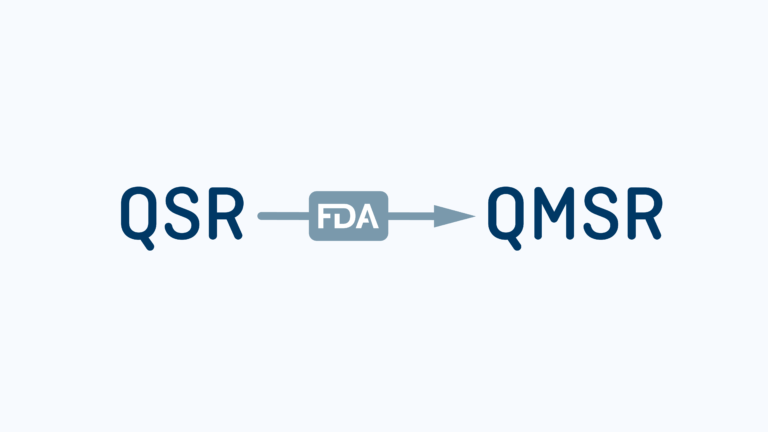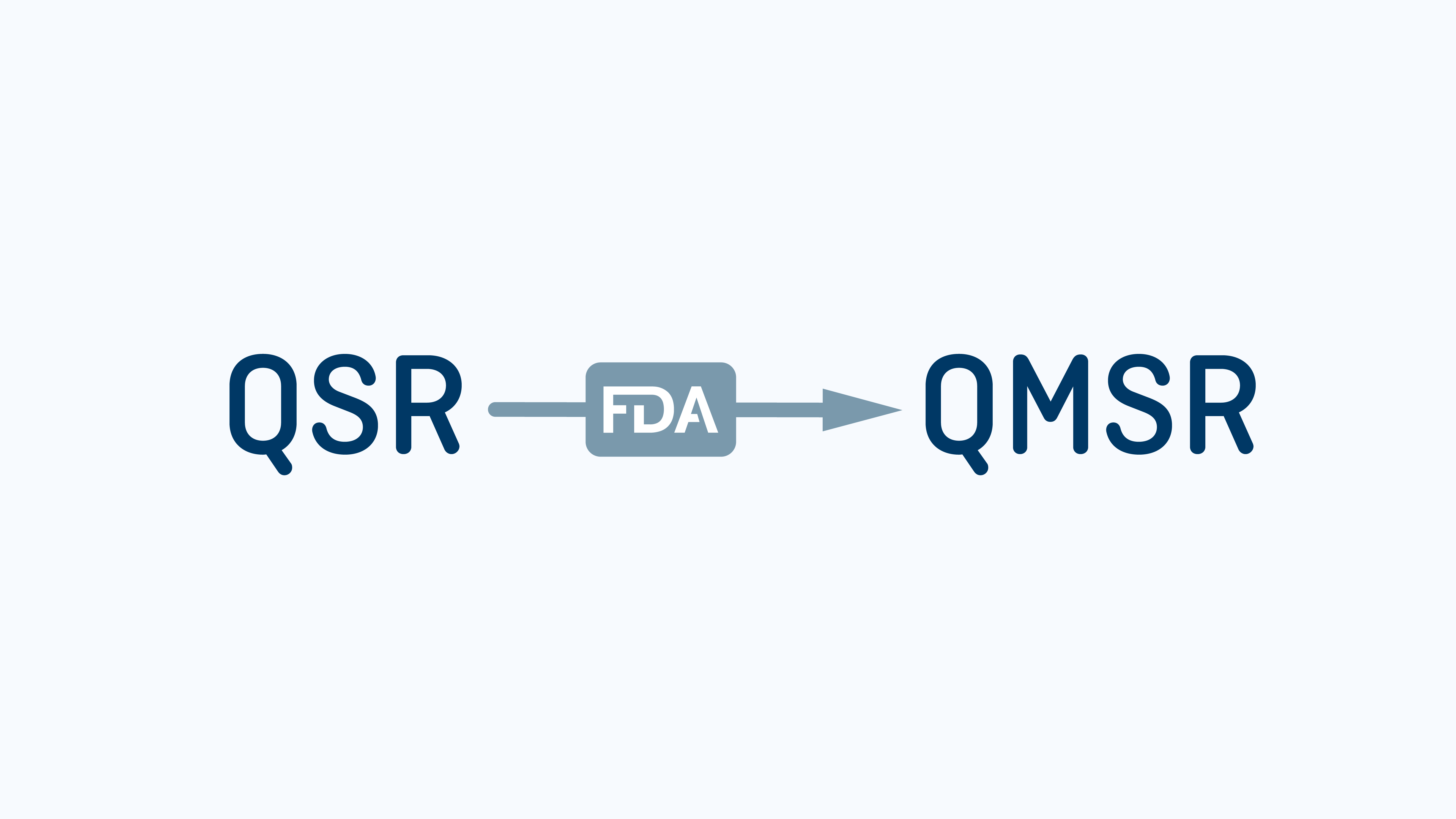
The United States Food and Drug Administration (FDA) recently announced a significant change in its regulatory framework, shifting from the current Quality System (QS) Regulation (21 CFR 820) to a new system known as the Quality Management System Regulation (QMSR). QMSR will go into effect two years after the rule’s publication in the Federal Register; FDA will begin enforcing the new requirements on February 2, 2026. This shift marks a significant milestone in the FDA’s efforts to align its regulatory framework with international standards. Currently, companies that sell devices both in and outside the US must comply with QS and the international standard for quality management systems (ISO 13485), which are substantially similar. The QMSR system is designed to focus more on a risk-based approach to regulation and to eliminate the redundancy of effort required to comply with similar requirements.
For manufacturers of US medical devices who also comply with ISO 13485, the change to QMSR should be seamless. Compared to QS, QMSR emphasizes the importance of risk management in the development and manufacturing of medical devices. Throughout the product life cycle, manufacturers will be required to conduct risk assessments and develop risk mitigation strategies, ensuring that potential hazards are identified and addressed before they can impact patient safety. Outlined below are the areas that are most impacted by the change from QS to QMSR:
1. Design Controls
The QMSR changes place a greater emphasis on risk management in design controls.
2. Supplier Controls
The QMSR changes strengthen the requirements for supplier controls—including procedures for evaluating, selecting, and monitoring suppliers.
3. Production and Process Controls
The QMSR changes introduce stricter requirements for production and process controls.
4. Post-Market Surveillance
The QMSR changes emphasize the importance of post-market surveillance. QMSR involves specific requirements for continuously monitoring quality data to identify trends, patterns, and potential safety concerns associated with their devices.
5. FDA Inspection Process
FDA will develop a new inspection process to align with the requirements of QMSR. The process will be developed for implementation when the rule takes effect, but FDA has not yet published any specific information about their plan. It will remain the FDA’s obligation to inspect medical device manufacturers to confirm compliance with the requirements of the FD&C Act and its implementing regulations, including not only the QMSR, but also other FDA medical device requirements, such as 21 CFR parts 803, 806, and 830, so the Agency has stated they will not accept certification to ISO 13485 in lieu of FDA inspection.
For companies that are not familiar with ISO 13484, most of the requirements are substantially similar to QS (21 CFR 820), so it will not be a complete overhaul of the current system to comply with QMSR. Discussed below are a few key areas that should not impact manufacturers significantly following the change to QMSR:
1. Notified body certification
As is the case with QS, an ISO 13485 certificate is not required to comply with QMSR.
2. Terminology
The terminology in QMSR will change to align with ISO 13485 which will eliminate terms such as device master record (DMR), device history record (DHR), and design history file (DHF). However, manufacturers are still required to maintain and retain these documents and it’s okay to keep calling them by those names.
3. Controls for device labeling and packaging
The FDA will retain requirements for labeling inspection activities from QS as ISO 13485 lacks this.
Overall, the QMSR changes represent a significant shift in the regulatory landscape for medical device manufacturers who are not already complying with ISO 13485. These changes place a greater emphasis on risk management in the areas of design controls, supplier controls, production and process controls, post-market surveillance, and quality system audits. By complying with these changes, manufacturers will maintain US regulatory compliance and will also be better positioned to market their products globally.


